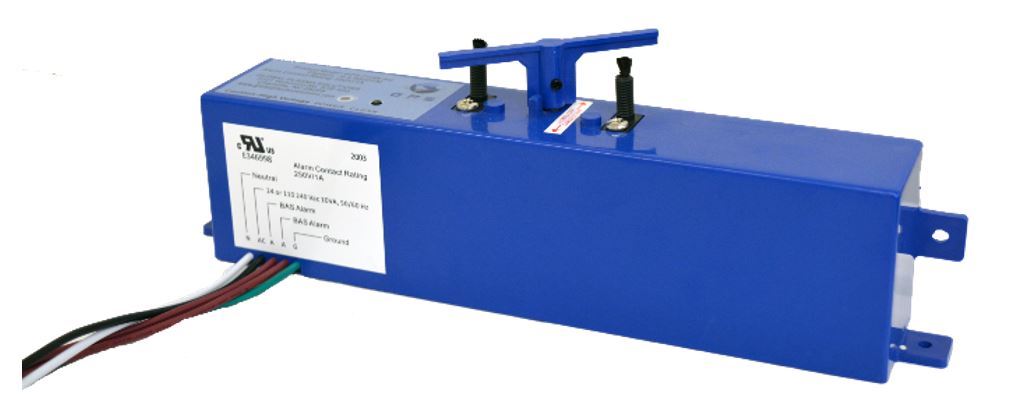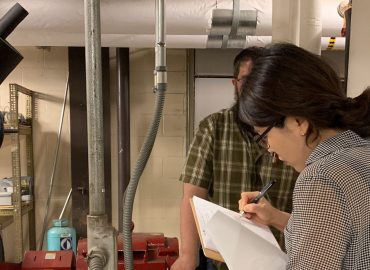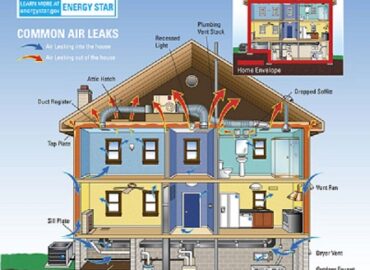Overview: Ionization technologies have been in use for air purification since around 2000 when Sharper Image released the Ionic Breeze air purifier. Early versions of ion generating devices used plasma tubes to energize air flowing over the plasma, breaking the water vapor molecules into hydroxyl radicals, ozone, and other reactive oxygen species (ROS). The problem with these early models was the purposeful or incidental production of ozone, a respiratory irritant. Ozone also reacts with volatile organic compounds (VOCs), particulates, and other pollutants which can create harmful by-products such as formaldehyde and ultrafine particles.
Newer technologies claim to have addressed these health concerns, but comprehensive as-used test data on effectiveness of air cleaning and by-product production are still on-going. Ionizing air purifiers should be selected with caution. Ensuring any unit looked at for air cleaning in occupied spaces is UL 2998 certified will ensure that ozone is not a product of the ionizing process.
Removes, Dilutes or Inactivates Pollutants: Ionizer air cleaners are intended to remove and inactivate VOCs and pathogens in two ways. First, ions create a charge on particles that cause them to settle out of the air onto surfaces in the space, removing them from the breathing area. Secondly, as ions attach to pathogens and VOCs, they can chemically alter these materials and inactivate pathogens, and convert VOCs to harmless CO2 and water vapor when a full reaction occurs. Studies show that these devices are effective at inactivating the SARS-CoV-2 virus in the air but have mixed results on surfaces.
Harmful Byproducts: Original plasma tube ionizers emitted energy that could crate ozone, which is a respiratory irritant that can cause minor irritation in low doses and respiratory distress in larger or prolonged doses. Modern plasma ionizers are intended to produce ozone for unoccupied space sanitation with residual ozone ventilated and removed before occupants return. Commercially available portable ionizers can also produce ozone, though, and should be avoided or confirmed to be designed not to produce ozone through a UL 2998 certification.
New bipolar ionizers use low voltage to generate ions and are designed not to produce ozone. However, both technologies have been shown to have incomplete reactions with VOCs in the air in some situations, which can result in conversion of VOCs into other harmful chemicals. The units have also generally ben found not to impact overall particulate counts in spaces. A summary of bipolar ionization studies is below.
Added Energy: Both products use a small amount of energy to create a plasma for ion generation. The energy consumption is on the order of 2W per 1,000 CFM of capacity. However, these ionizer systems add no pressure drop to the fan and usually claim overall energy savings due to the reduced need for outdoor air. We strongly caution against reducing outdoor airflow for energy savings based solely on ionizer installation, though.
Install Cost: Adding an ionizer system to a central air handler or room air conditioning unit costs between $500 to $5,000 depending on the size and CFM of the air handling system.
Beyond the Pandemic: Ionizer technologies still require detailed study to determine if they are genuinely improving indoor air quality, especially as one of the touted benefits is energy savings from reducing outdoor air ventilation. We strongly recommend detailed research into the quality of the air produced by ionizers and absence of hazardous by-products before purchasing a unit. This product is highly marketed for combatting COVID-19 in buildings, however, SEDAC does not recommend this technology at this time in alignment with ASHRAE recommendations. Due to the risk of hazardous by-products and inconclusive study results on anti-microbial effectiveness, we recommend using other proven technologies first.
Research Articles
Boeing: Use of Bipolar Ionization for Disinfection within Airplanes
- Mixed results for pathogen inactivation on surfaces
- Ions in turbulent duct flow cancelled each other out
- Recommends further studies
- Some VOCs reduced, some increased
- Little effect on particle counts
- Minor decrease in ultrafine particles
- Minor reduction in larger particle removal
Trane Whitepaper on Bipolar Ionization
- Showed pathogen inactivation in air, but not on surfaces
- Ozone was measured, but incidental; not detected following UL 2998 protocols
- Reduction in pathogens was not correlated with ion concentration
- No reduction of monitored VOCs (formaldehyde and toluene)
- Further study recommended
- Found improvement to respiratory health
- Found detriment to cardiovascular health






